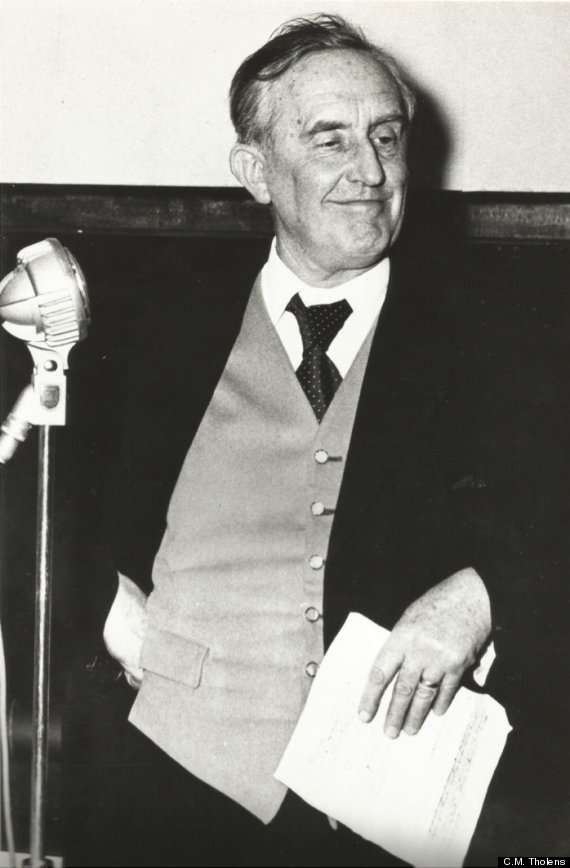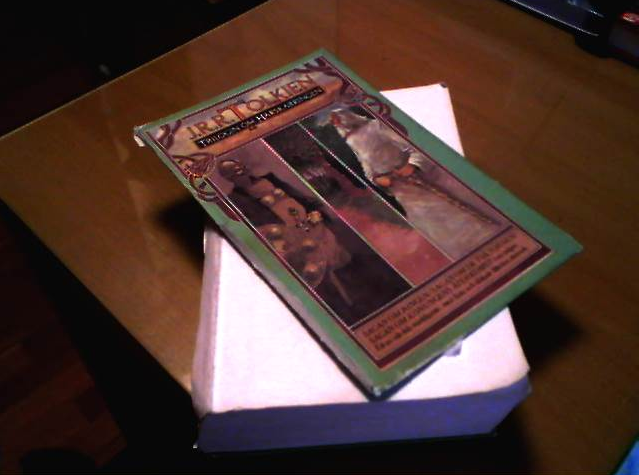Totenkindly
@.~*virinaĉo*~.@
- Joined
- Apr 19, 2007
- Messages
- 50,244
- MBTI Type
- BELF
- Enneagram
- 594
- Instinctual Variant
- sx/sp
J.R.R. Tolkien Reveals TRUE Meaning Of 'The Lord Of The Rings' In Unearthed Audio Recording | Noble Smith
Acutally, I thought the picture accompanying this was very interesting... his body position and appearance is a bit different than anything i've seen before... even if he looks mildly soused.

Over 20 years ago, a lost recording of J.R.R. Tolkien was discovered in a basement in Rotterdam, but the man who found it kept this important reel-to-reel tape hidden away. Until recently, only he had heard the recording. But now, I am one of those lucky Middle-earth lovers who has listened to this magical magnetic tape, and I happily declare that it is awesome. For it proves once and for all that Professor Tolkien was, in fact, very much the hobbit that we all suspected him to be. What's more, we get to hear Tolkien reading a lost poem in the Elven tongue which he translates into English. And to top it off, he states in unambiguous terms (cue Rohirrim war trumpets) the real meaning of The Lord of the Rings!
Got chills yet Tolkien fans? Just wait until you hear it yourself.
The recording took place on March 28th, 1958 in Rotterdam at a "Hobbit Dinner" put on by Tolkien's Dutch publisher and a bookseller. Tolkien's own publisher, Allen and Unwin, paid for his trip to the Netherlands to attend this special party. According to his letters the author was chuffed to find that Rotterdam was filled with people "intoxicated with hobbits." Tolkien showed up at a packed hall where 200 hobbit fanatics had come to hear him and other scholars talk about Middle-earth. The menu for the dinner was whimsically Tolkienesque, with Egg-salad à la Barliman Butterbur, Vegetables of Goldberry, and Maggot-soup (mushroom soup regrettably named after Farmer Maggot). And a Dutch tobacco company supplied the tables with clay pipes and tobacco labeled Old Toby and Longbottom Leaf, which pleased Tolkien, a devotee of the "art" of smoking pipe-weed.
Accounts of the event have been cobbled together over the years but, sadly, nobody bothered to transcribe exactly what Tolkien said. Christopher Tolkien must have had some of his father's notes for his speech, because a brief passage from Tolkien's Hobbit Dinner oration appears in Humphrey Carpenter's biography, albeit in a slightly different form. Thankfully we now know that someone had made a complete recording of the event. This reel-to-reel tape was discovered in 1993 by a Dutchman named René van Rossenberg, a Tolkien expert who owns a shop in the Netherlands devoted to all things Middle-earth (TolkienShop.com)...
Acutally, I thought the picture accompanying this was very interesting... his body position and appearance is a bit different than anything i've seen before... even if he looks mildly soused.


 )
)


